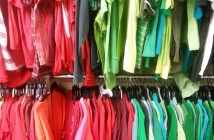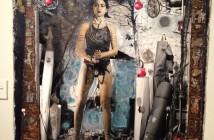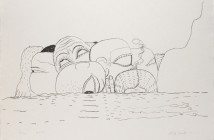
Philip Guston’s pictography forms an intimate coded narrative. This style (for which he is known) only emerged late is his career and life, and feel sincere and autobiographical. Guston’s appropriation of the style of underground comics is a crude confrontation between high and low art, which is now celebrated, but at the time was roundly lambasted. This style, along with recurrence of specific detritus—piles of shoes, bare light bulbs, clocks, and cigarettes—interweave to create a signature visual vernacular. They are as quintessentially his as the sinister hooded figures and confused masses of limbs, or his reductive color palette, limited to mostly red, pink, accentual yellows, and organized with thick black outlines, the painterly qualities unconcealed.
In "Painting, Smoking, Eating" the figure is passive and inert in a miasma of squalor. The room a claustrophobic teeming heap, as if what Guston wanted to express was pressed up against the canvas attempting to rupture its surface. The subject is shown helpless, without the requisite bodily equipment to complete the activities aforementioned in the title, his mouth merely implied by the smokestack of his cigarette, his arms obscured. His plate of food resembles an ashtray. This is not a portrait from the land of healthy living, rather, a life that is minimally eked out against the encumbrance of psychic weight that composes its backdrop.
Guston’s repetition of visual metaphor reveals trauma laid bare. The piled shoes are a reference to photographs of the aftermath of the Holocaust. The Ku Klux Klan hooded figures convey the ever-present threat of violence. This is emblematic of personal disillusionment. Guston grew up in a family of Ukrainian Jewish immigrants who fled to escape religious persecution, only to live in the shadow of this threat in exile.
In cinema, diegesis refers to the narrative space of the expression of an inner world. In Guston’s later work this intimacy is communicated by expressing the excess of laden psychic significance imbued in everyday object. This depiction of personal mythology through charged objects is shared with De Chirico and is taken up by contemporary artists such as Louise Bourgeois and Sophie Calle. The style itself is appropriated, and expresses the irremovable taint of the visual world one sees and experiences upon the visual world that one creates and depicts.
This laden quality of artistic representation has the possibility of offering the viewer a glimpse of the artist’s narrative space. It is what Proust did to the madeleine; what Duchamp did to the urinal. Having a recognizable and recurrent visual lexicon shows us the way an object is thick with the residue of significance. These things cannot be coupled with the word ‘mere’ in that the artistic representation returns the quotidian object back to us with the additional personal resonance. I see Guston as laying bare the contamination of objects with psychic trauma, showing the viewer how mood and experience infests one’s intimate paraphernalia, creating a taxonomy of meaning as shibboleth.
•••
Image Information: Philip Guston, Painting, Smoking, Eating, 1973
Oil on canvas, 197 x 263 cm
Collection of the Stedelijk Museum Amsterdam



